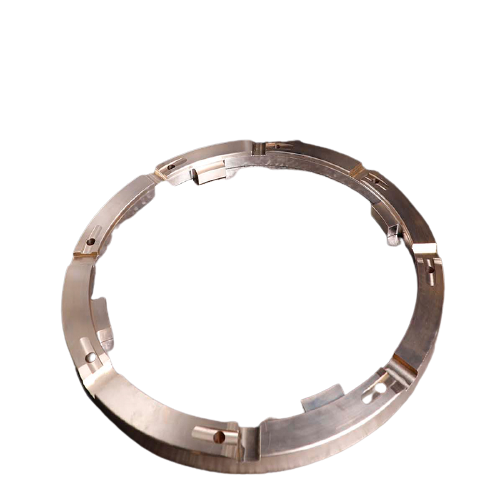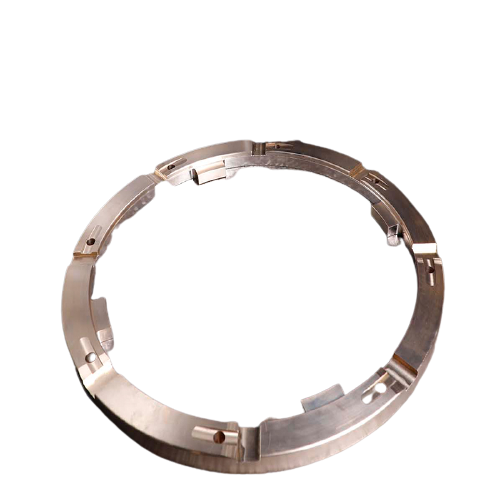Thrust ball bearing is a kind of separation bearing, the shaft ring, seat ring can be separated from the cage, steel ball components. The shaft ring is matched with the shaft ring, the seat ring is matched with the bearing seat hole ring, and there is a gap between the shaft; Thrust ball bearings can only accept axial load, one-way thrust ball bearings can only accept axial load in one direction, two-way thrust ball bearings can accept axial load in two directions; The thrust ball bearing cannot restrain the radial displacement of the shaft, and the limit speed is very low. The one-way thrust ball bearing can restrain the axial displacement of the shaft and the shell in one direction, and the two-way bearing can restrain the axial displacement of the two directions. Thrust roller bearings are used to accept combined axial and radial loads dominated by axial loads, but the radial load shall not exceed 55% of the axial load. Compared with other thrust roller bearings, this kind of bearing has lower friction coefficient, higher speed, and has the function of centering. The roller of type 29000 bearing is asymmetric spherical roller, which can reduce the relative sliding of roller and raceway in the work. Besides, the roller is long and large in diameter, the number of rollers is large, and the load capacity is high. Oil smooth is generally used, and the grease smooth can be used in some cases of low speed. In the planning and selection, should be given priority; 80000 type thrust cylindrical roller bearing, 90000 type thrust tapered roller bearing and AXK type thrust needle roller bearing can accept one-way axial load, which is much larger than the axial load capacity of thrust ball bearing, and has large rigidity and small axial space occupation. Thrust cylindrical roller bearing and thrust needle roller bearing are suitable for the occasion of low speed, the speed of thrust tapered roller bearing is slightly higher than that of thrust cylindrical roller bearing.
Thrust bearings are divided into thrust ball bearings and thrust roller bearings. Thrust ball bearings are divided into thrust ball bearings and thrust angular contact ball bearings. The raceway ring that works with the shaft is called the shaft ring and the raceway ring that works with the housing is called the seat ring. The bidirectional bearing cooperates with the shaft. Unidirectional bearings can accept unidirectional axial load, and bidirectional bearings can accept bidirectional axial load. The bearing with spherical surface of the seat ring has self-aligning performance, which can reduce the influence of device errors. This kind of bearing is mainly used in car steering organization, machine tool spindle. Thrust roller bearings are divided into thrust cylindrical roller bearings, thrust self-alting roller bearings, thrust tapered roller bearings, thrust needle roller bearings. Thrust cylindrical roller bearings are mainly used in oil drilling RIGS, iron and steel machinery. This type of thrust self-aligning roller bearing is mainly used in hydraulic generator, vertical motor, ship propeller shaft, tower crane, extruder and so on. Thrust tapered roller bearing this kind of bearing primary use: one-way: crane hook, oil drilling ring. Two-way: roll neck of rolling mill. Plane thrust bearing mainly accepts axial load in assembly and is widely used. Although the operation of thrust bearing device is relatively simple, faults still often occur in practical repair, that is, the bearing tight ring and loose ring device are not correct, resulting in the bearing losing its function and the journal being quickly worn out. The tight ring device is on the end face of the stop part, that is, fault assembly. The inner ring of the tight ring is in transition cooperation with the journal. When the shaft rolls, the tight ring is driven and conflicts with the end face of the stop part. When the axial force (Fx) is applied, the conflict moment is greater than the inner diameter cooperative resistance moment, resulting in forced rolling of the surface of the tight ring and the shaft, and aggravated journal wear.

